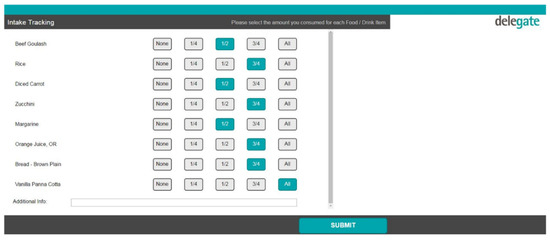Technology, in particular wearables and mobile phones, may help to improve the assessment of the eating environment, the food we eat, and efficacy of dietary interventions.
What technologies are gaining steam in this field?
Paper-based records, web or mobile food diaries and built-in barcode scanner have enjoyed some lime light but never really picked up.
Photograph-based diaries have evolved from Amazon's Mechanical Turk based services to Ecological Momentary Assessment apps using Deep Convolutional Neural Networks and nudging chatbots. When will this technology becomes ubiquitous? Or will it be completely automatic, done for us by passive sensing tools such as wrist-based eating detectors or our walls and places we order food from? As in an Australian hospital that offered a food ordering app (electronic food service, EFS) that would also do nutritional analysis. The patients seemed to really like it. Was it because there was not much else to do in the hospital?
Photograph-based diaries have evolved from Amazon's Mechanical Turk based services to Ecological Momentary Assessment apps using Deep Convolutional Neural Networks and nudging chatbots. When will this technology becomes ubiquitous? Or will it be completely automatic, done for us by passive sensing tools such as wrist-based eating detectors or our walls and places we order food from? As in an Australian hospital that offered a food ordering app (electronic food service, EFS) that would also do nutritional analysis. The patients seemed to really like it. Was it because there was not much else to do in the hospital?
Food coaching apps will only keep evolving.
REFERENCES
Sun J, Radecka K, Zilic Z. FoodTracker: A Real-time Food Detection Mobile Application by Deep Convolutional Neural Networks. arXiv preprint arXiv:1909.05994. 2019 Sep 13.
Jiang L, Qiu B, Liu X, Huang C, Lin K. DeepFood: Food image analysis and dietary assessment via deep model. IEEE Access. 2020 Feb 13;8:47477-89.
Roberts S, Chaboyer W, Hopper Z, Marshall AP. Using Technology to Promote Patient Engagement in Nutrition Care: A Feasibility Study. Nutrients. 2021 Feb;13(2):314.
Goldstein SP, Hoover A, Evans EW, Thomas JG. Combining ecological momentary assessment, wrist-based eating detection, and dietary assessment to characterize dietary lapse: A multi-method study protocol. Digital Health. 2021 Feb;7:2055207620988212.
